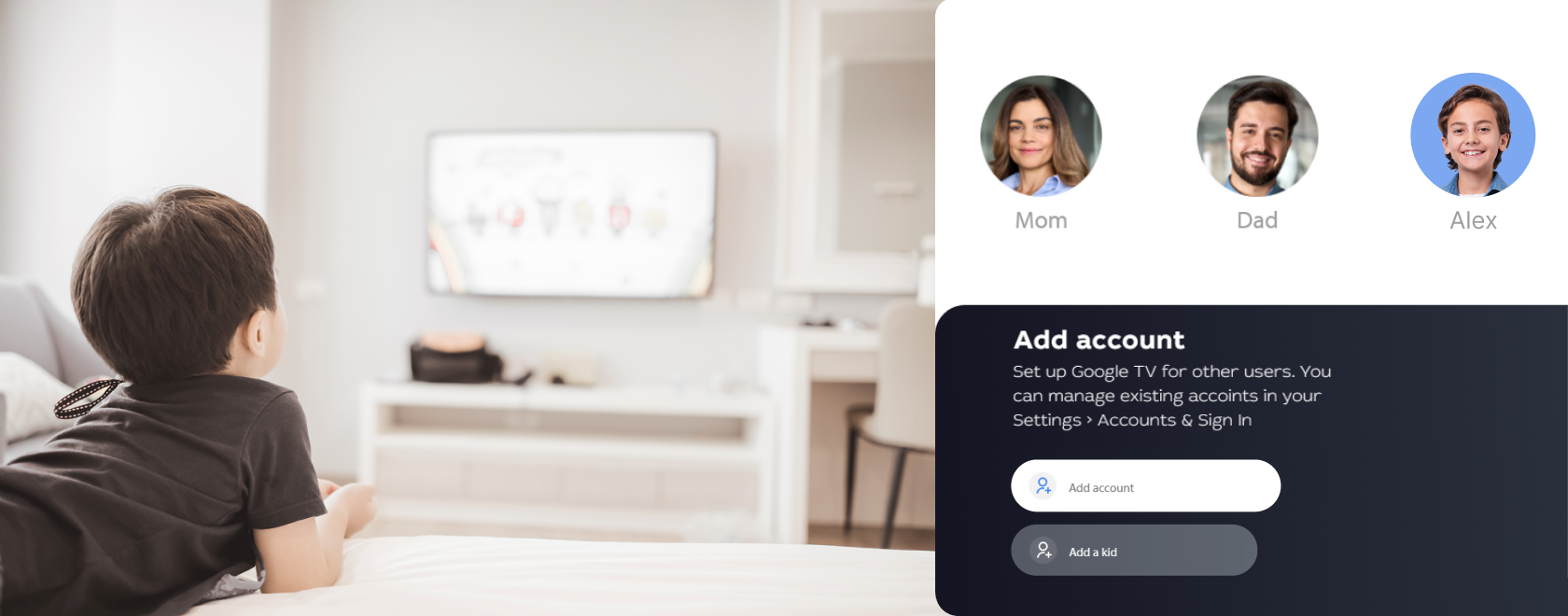Nowadays, more and more families choose IPTV (Internet Protocol Television) because of its convenience and wide selection of channels. However, one issue that’s becoming increasingly important is how to ensure IPTV safe viewing for kids and prevent children from accidentally accessing inappropriate content.
In this article, we’ll explain how to set up parental control on IPTV, including ways to block channels on IPTV using various features and settings.
Why parental control is so important
Modern IPTV platforms offer thousands of channels and programs, including adult-oriented content. While having a wide range of choices is generally a good thing, it increases the likelihood that a child may stumble upon unsuitable programming.
Thanks to IPTV parental settings that enable content restrictions and a mature content filter, you can create a kid-safe TV environment, ensuring your children don’t access shows or movies meant for adults. By implementing IPTV parental control, you can establish age restriction IPTV policies and limit access to specific channels or content categories.
Parental control makes it possible to protect viewers from unwanted content, set age-related restrictions, and hide programs that are not age-appropriate. It also helps form a child-friendly viewing environment by filtering out inappropriate programming and taking age categories into account. Not only that, but it also allows parents to establish flexible rules that help supervise what children watch, without having to constantly monitor them.
It’s also important to remember that most control systems require a PIN code. When you first connect to IPTV, consider choosing a complex code that children are unlikely to guess.
What parental control features may be offered
The capabilities of parental control depend on the hardware you use and your provider’s settings. Some operators provide only basic PIN code protection, while others offer more advanced mechanisms that let you enable a parental lock on IPTV box devices. You may well also find separate profiles for different access levels or automatic blocking of “18+” channels. This functionality supports IPTV safe viewing for kids and reduces the chance of stumbling upon inappropriate programs.
If your operator supports a multi-profile mode, each family member can have their own account. In a child’s profile, various channels or movies labeled for adults will automatically be blocked. This setup helps maintain safe viewing for younger audiences and prevents them from unintentionally watching age-restricted content.
Step-by-step guide: how to set up parental control
Sign in to the system. Access the “Settings” menu of your IPTV set-top box or use a web interface if available. The relevant option is often called “Parental Control” or IPTV parental settings.
Create or enter a PIN Code. If you don’t have a password or code yet, the system will prompt you to set one up. Choose a strong combination and store it where children can’t find it.
Set age restrictions (Age restriction IPTV). Decide on an age threshold above which content will be blocked. For example, you can block programs rated “18+.”
Configure channel blocking (Block channels on IPTV). Select the specific TV channels you want to make inaccessible to children. If necessary, the system will require a PIN code to watch blocked content.
Enable Additional Filters. If your device supports it, you can mark specific genres or keywords so the set-top box automatically blocks matching programs.
Save and check settings. Make sure all changes are applied. Some IPTV devices may need to be restarted for new settings to take effect.
What to do next
After performing the basic setup, it’s a good idea to check periodically whether the parental control is still working correctly, especially if your IPTV provider releases software updates. Changing your PIN code from time to time helps avoid situations where children might discover (intentionally or not) how to bypass it. If your device supports viewing logs or histories, you can monitor them to ensure no rules have been broken.
Even with reliable technological safeguards, it’s essential to explain to children why certain programs are unsuitable for them. This approach fosters a more conscious attitude toward viewing and decreases the likelihood that they will try to circumvent the restrictions. Ideally, parental control should be combined with family discussions about acceptable and unacceptable shows or topics.
Additional tips and common pitfalls
One key point to remember is that a child lock for IPTV will be more effective if you install updates promptly, because outdated software may contain vulnerabilities. If you notice that some restrictions aren’t working, you might need to update your set-top box’s firmware or contact your provider. A strong PIN code is also crucial—avoid easy combinations like “1234” or “0000.” If you forget your code, you may have to contact a service center for help resetting it.
Some IPTV systems allow time-based restrictions that limit daily viewing hours, which not only block undesirable content but also regulate overall screen time. Finally, consider testing your parental control features regularly since channels can change their program ratings.
By properly configuring IPTV parental control, you can achieve IPTV safe viewing for kids, preventing them from accidentally accessing inappropriate shows and helping to develop responsible viewing habits for the future.
